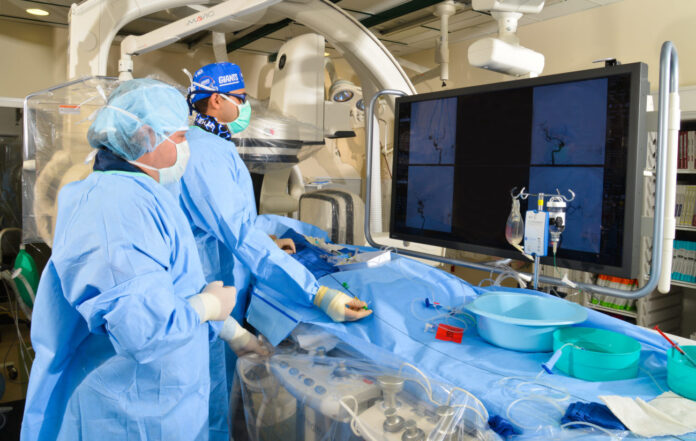HARLINGEN — If you’re a young person infected with COVID-19, you’re more prone to have a stroke, experts say.
Young COVID-19 patients who begin experiencing the customary stroke signs of numbness or vision problems should get to the hospital immediately, according to experts. Now more than ever it’s imperative you do so, says Dr. Ameer Hassan, head of the neuroscience department at Valley Baptist Medical Center.
May is National Stroke Awareness Month. While Valley Baptist has had to cancel many of its events in observance of this, the hospital is emphasizing the importance of stroke patients to seek treatment at the first sign of trouble.
Hassan expressed concern that many stroke patients aren’t coming to the hospital because they fear exposure to COVID-19.
“A lot less strokes and bleeds are coming in, which is concerning because there’s no evidence to prove that staying home or not working is going to decrease your risk of stroke,” Hassan said. “The trend that’s coming out across the country is that people are having their strokes at home and then either not showing up or ending up dead.”
This is an unnecessary consequence of COVID-19. Hospitals like Valley Baptist are the least dangerous places for COVID-19 infection because of the safety measures in place.
“We have ways to protect you and you don’t need to worry yourself about COVID,” Hassan said. “There’s a very low incidence of getting COVID when admitted to the hospital, compared to the community.”
Hassan explained Valley Baptist Medical Center has protocols in place to keep patients safe.
“Every patient that comes up, everybody’s temperature is getting checked, getting a short questionnaire to see if they have any travel history or exposure risks,” Hassan said. “Then every patient comes up with a face mask, even if you’re not at risk.”
Indeed, everyone is wearing personal protective equipment, and that’s not all. The hospital protects its equipment and facilities, too. Like all parts of the hospital, staff members carefully prepare areas where doctors perform stroke procedures.
“The room is prepared beforehand so there’s no chance of the virus getting on any of the surfaces,” Hassan said. “Everything in the room is covered before the patient comes up. So the patient gets on the table and we do our procedures. If the patient is high risk they go to the COVID unit.”
Once surgeons have tended to a stroke patient, all the protective materials are disposed of properly.
“The room gets a deep clean,” Hassan said. “Our room cycles the air four times an hour, so even if it’s in the air it would be out within the hour. Then it’s ready for the next patient.”
In a nutshell, between COVID and stroke, the stroke is more serious and should be treated immediately.
“With a stroke, you need to get the IV treatment within three hours or go to the cath lab,” he said. “If you wait too long the tissue is already dead and then that’s it. You’ll never recover from the stroke.”
And forget the preliminary belief that the virus is only a threat to older people.
“It’s more deadly in the older population,” Hassan said. “But the risk of getting it is the same whether young or old.”
He gave special reference to data coming from the New York area.
“What we noticed is that young patients are more likely to be hypercoagulable, which means their blood is thicker,” Hassan said. “They’re more likely to get a stroke if they are COVID positive. It’s very very serious. Young patients get strokes if they are COVID positive and at a much higher rate than they would ever get it normally.”
COVID-19 brings very different health problems depending on the age and health condition of those who test positive, according to Hassan.
SIGNS OF A STROKE
- Trouble speaking and understanding what others are saying.
- Paralysis or numbness of the face, arm or leg. This often affects just one side of your body. Also, one side of your mouth may droop when you try to smile.
- Problems seeing in one or both eyes.
- A sudden, severe headache, which may be accompanied by vomiting, dizziness or altered consciousness.
- Trouble walking or a loss of coordination.
Source: Mayo Clinic




